
Bizen ware (備前焼, Bizen-yaki) is Japanese pottery produced in Bizen province in Okayama prefecture. It is known for its rustic qualities, which became a popular aesthetic in Japanese tea ceremonies. One of the main characteristics of Bizen ware is superior hardness due to high-temperature firing. Earthen tones of reddish-brown, traces of molten ash rather than glazes, and organic markings resulting from a wood-firing kiln are all distinctive qualities of Bizen ware.
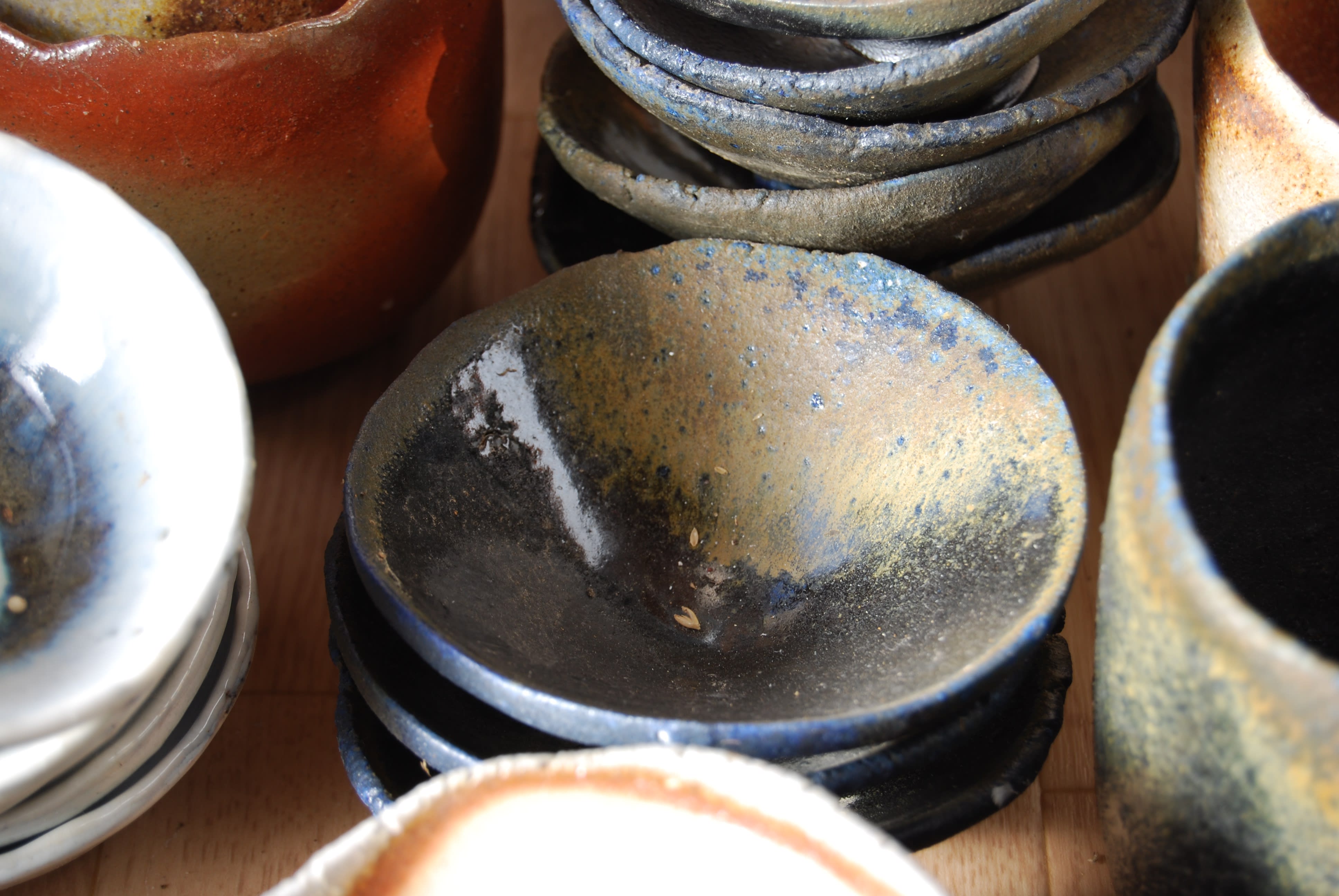
Image: Hiroshi Goseki's Studio
Typically Bizen clay is sticky, delicate, and contains high traces of iron content. Some potters consider this inadequate clay because it has high shrinkage. Due to the indicative shrinkage, most Bizen does not have a glaze since it would slip off during the firing process.

Image: Hiroshi Goseki's Studio
The exterior design is determined by how the potter controls the fire and how the potter arranges the vessels in the kiln. Typically pottery is stacked, so the flames travel between the stacks around each vessel. Less wood causes the flame to oxidize, which turns the vessels reddish-brown. Charcoal ashes melt in the heat and act like a glaze that adheres to the surface of the bodies. It may also create sprinkles of yellow known as Goma, or “sesame seed” effects.
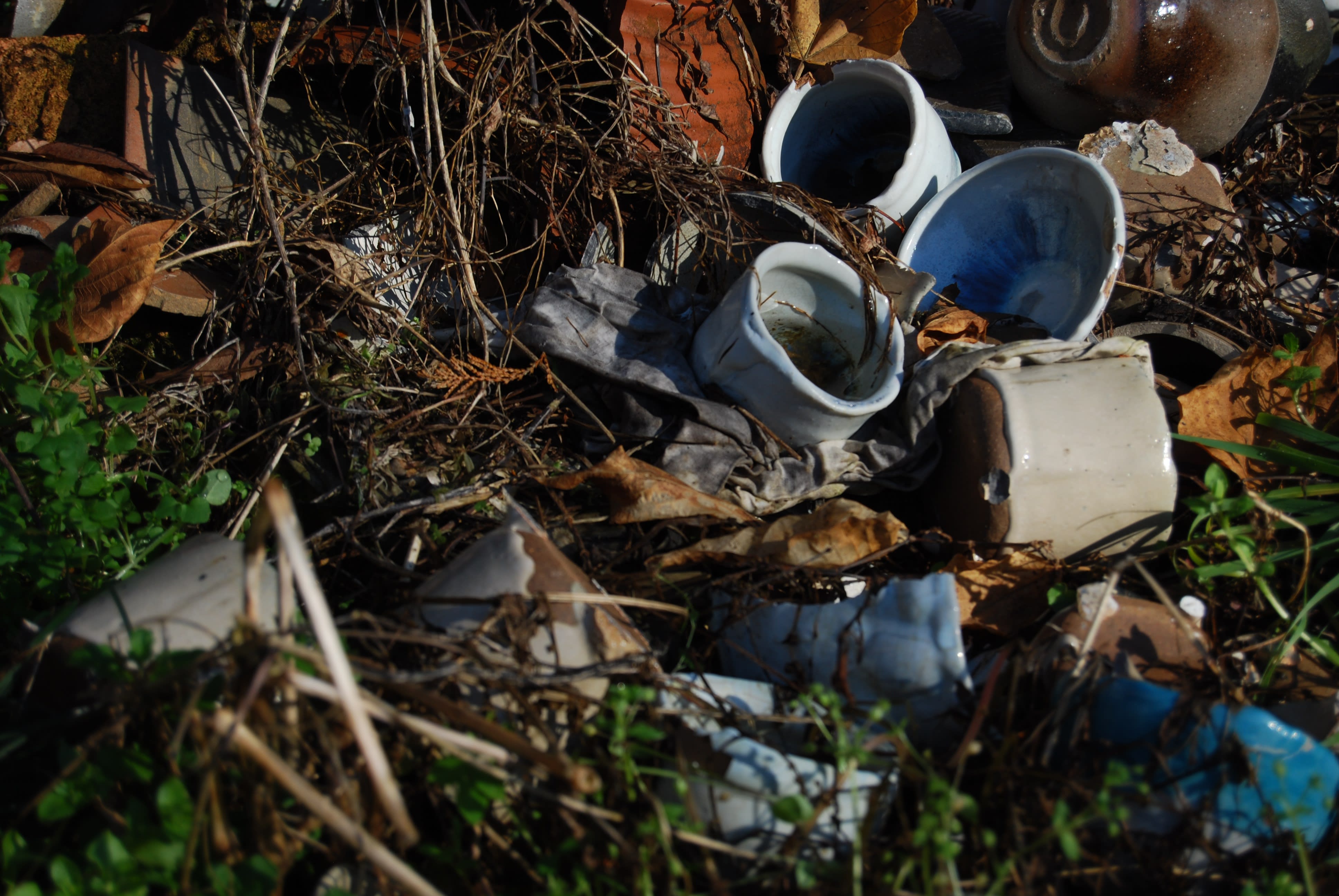
Image: Hiroshi Goseki's Studio
Another discriminating factor is the low firing resistance. It cannot withstand rapid high-temperature changes, so firing must be increased slowly over time. Firings occur only once or twice a year, lasting 10 – 14 days. Red pine is used as firewood because the resin assists in the production of high temperatures. Firewood is added every twenty minutes, day and night. The temperature begins at 600 degrees Celsius and only increases incrementally to avoid cracking the vessels.
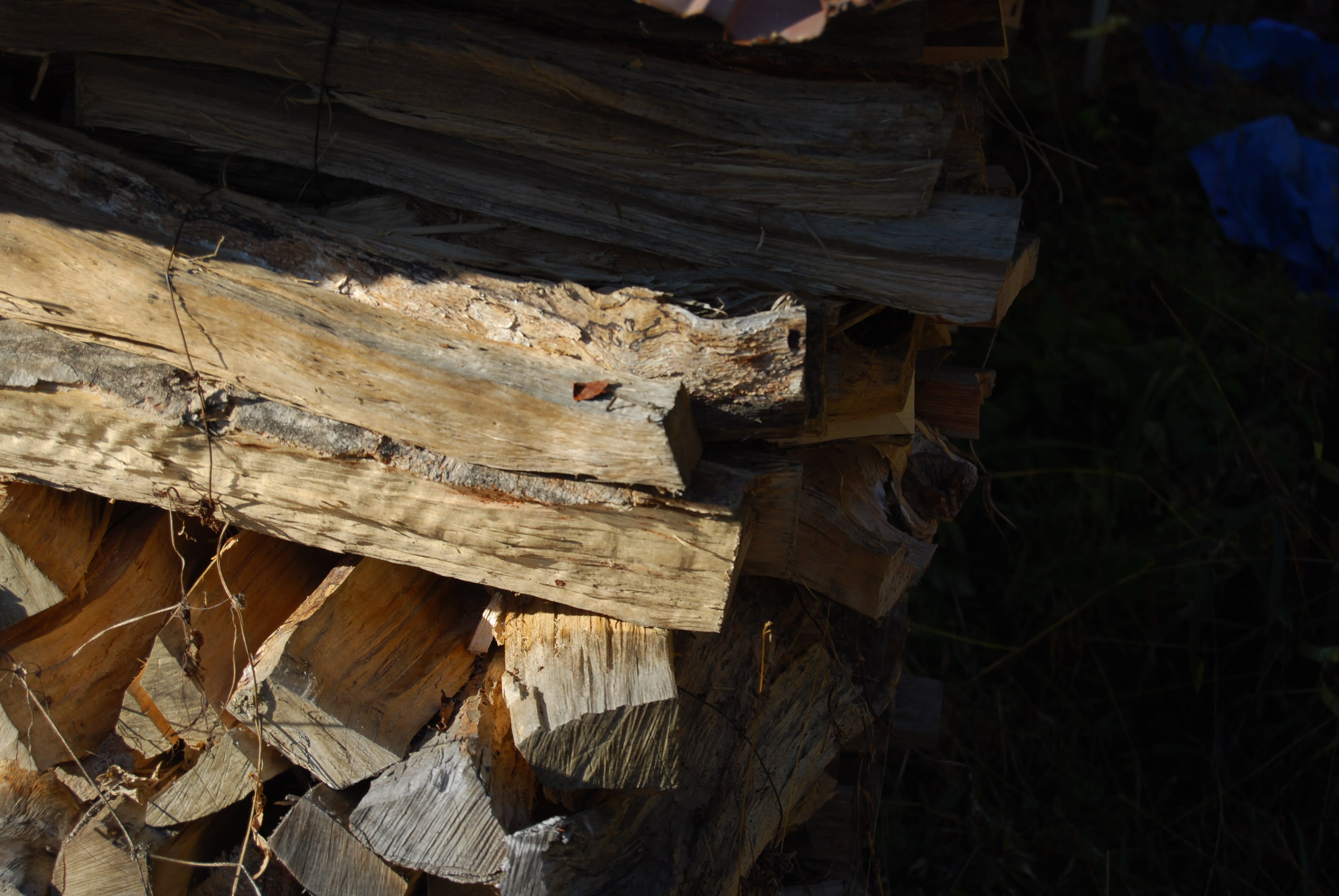
For Goseki, the firing process is fundamental. He is one of the few artists who cut down trees himself and chops them into pieces to put into the kiln. “I spend more time to use a chainsaw for making firewood than working with a potter’s wheel." - Hiroshi Goseki
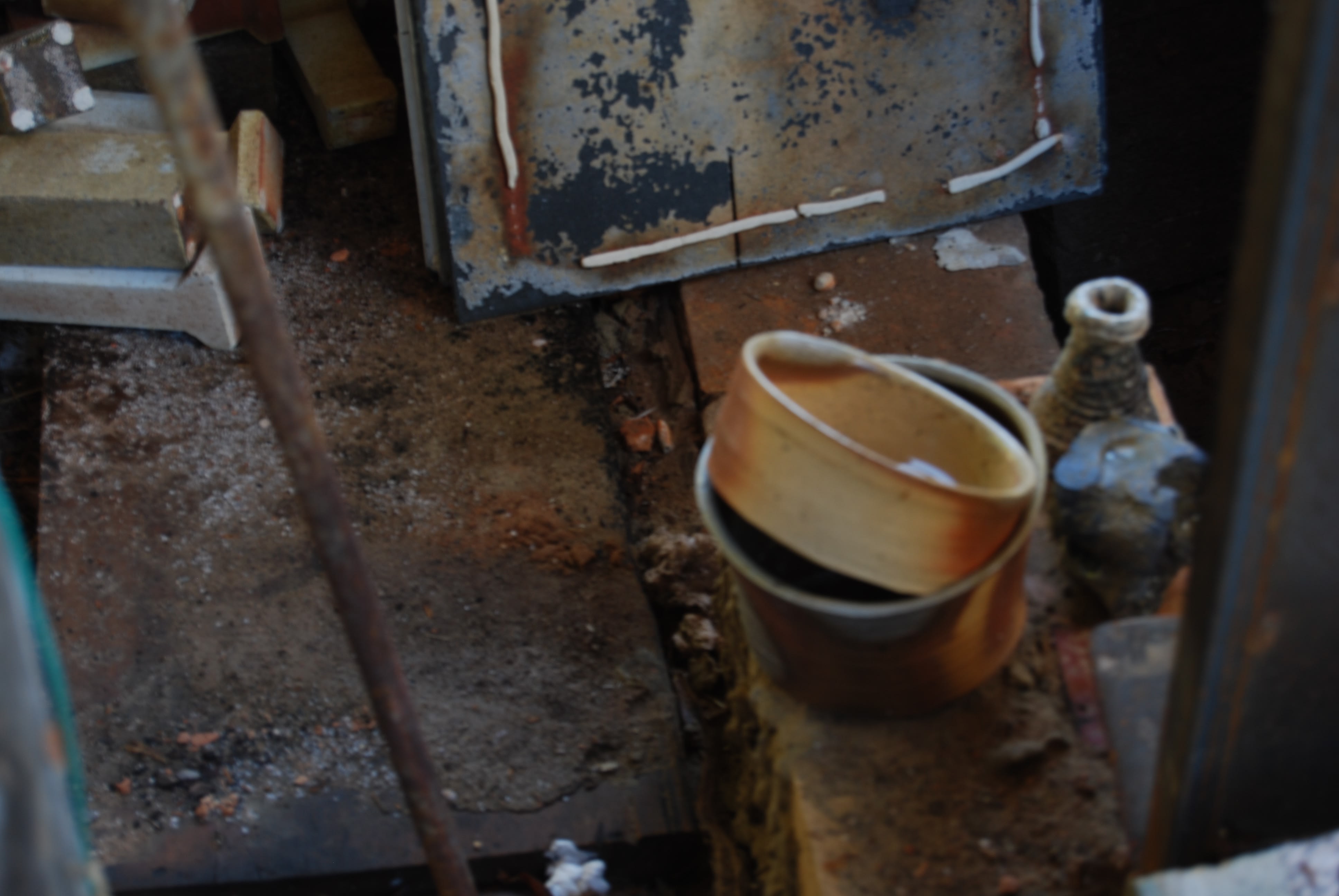
The firing process is almost complete by the eighth day, and the temperature is nearly 1200 Celsius, creating glowing white charcoal. The last step is throwing this white charcoal into the kiln, producing dark patterns on the vessels due to the lack of oxygen. Six days after the firing process, the flames are extinguished, and the vessels are taken out. This lengthy process is done slowly because the porcelain could crack if the kiln cools too fast. Lastly, the pieces are hand-polished and inspected by the potter.

Image: Hiroshi Goseki's Studio
This Hiyama Bizen Tea Bowl contains a classic red iron Hidasuki flashing. The lip of the form is a glossy red, resulting from an atmospheric firing. The overall shape of the tea bowl is petal-like, and the colors are very luxurious. The balance of matte and glossy on the form's surface creates depth in the overall composition. C22813
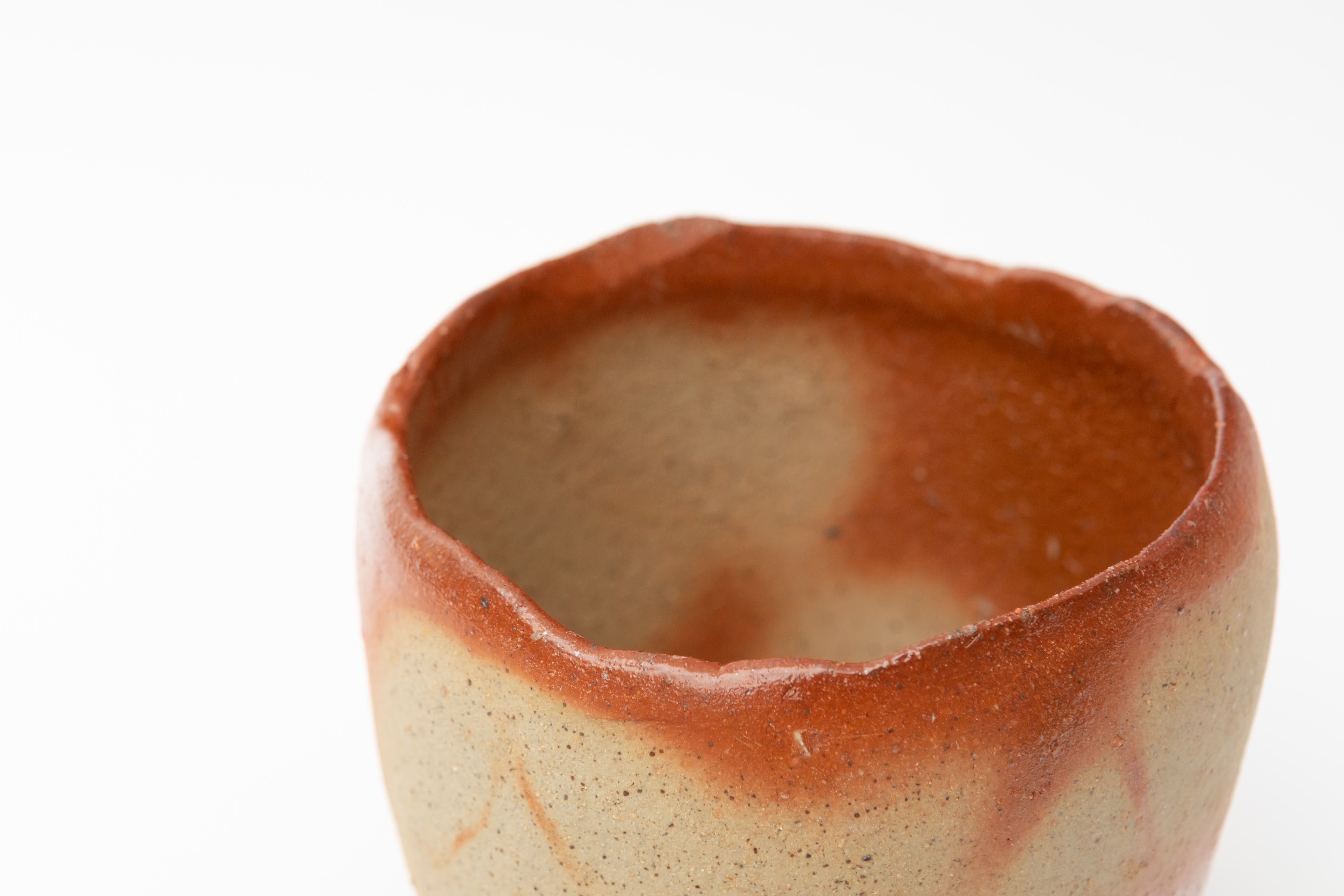
Hiroshi Goseki’s Blue Yohen Black Katakuchi Bowl has a striking surface color of blue and orange. The orange, bursting underneath the blue glaze, resembles a galaxy, like stars exploding through the bowl's surface. The spout of the form effortlessly extends from the lip of the piece, creating a petal-like structure. The matt black glaze underneath the texture of atmospheric firing is soft and harmonious with the rest of the form. C22805
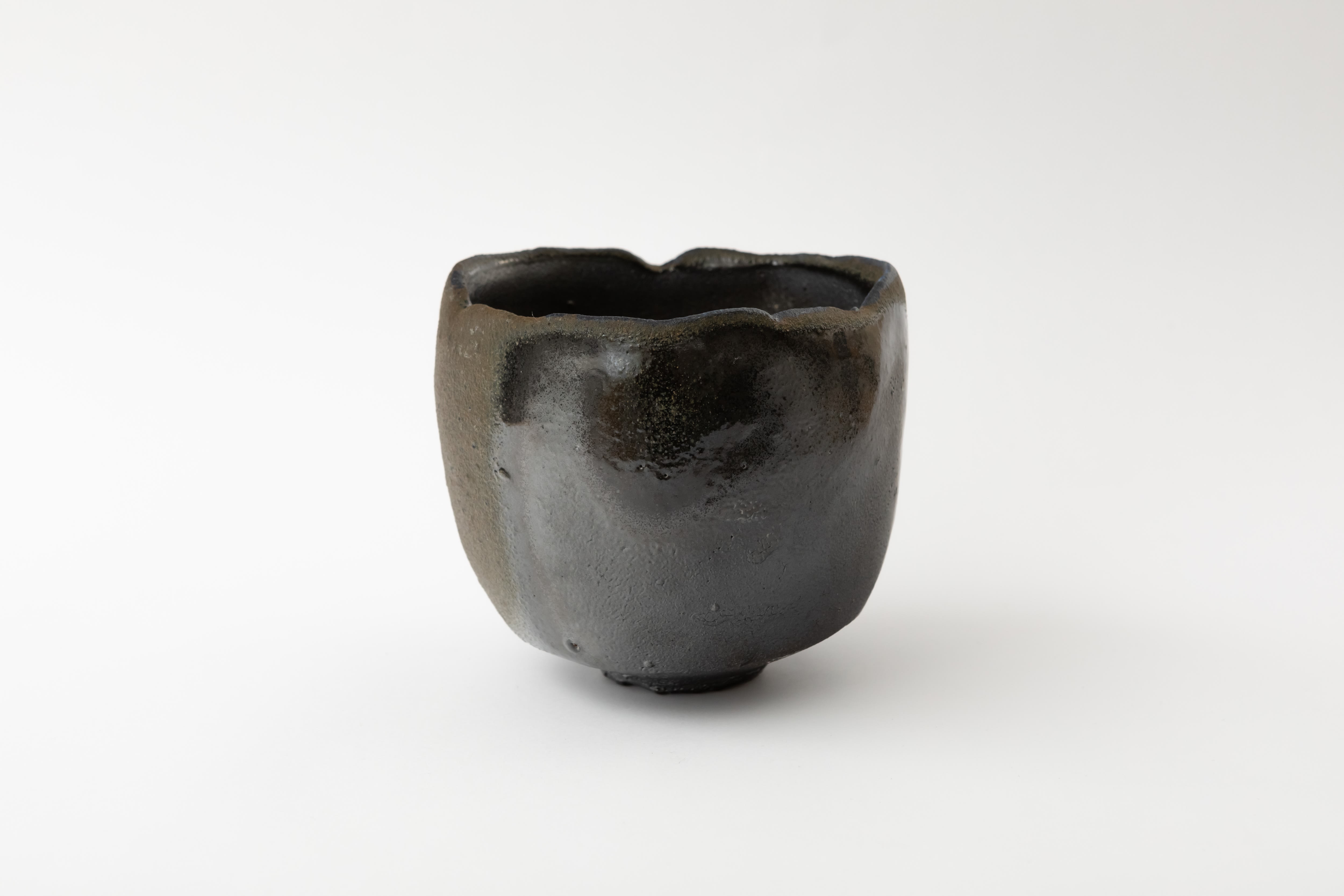
Hiroshi Goseki's Blue Yohen Black Katakuchi Bowl has a striking surface color of blue with white speckles as if the stary night has landed on this tea bowl. The orange, appearing underneath the blue glaze, resembles veins or rivers flowing under the surface. The matte black glaze underneath the texture of atmospheric firing is soft and harmonious with the rest of the form.

